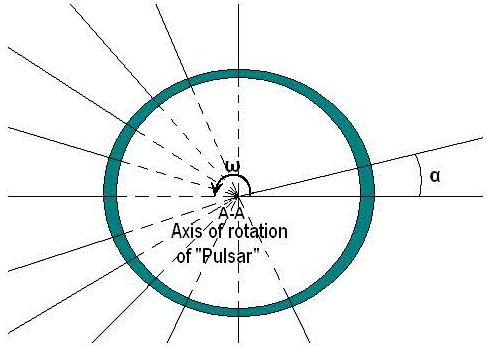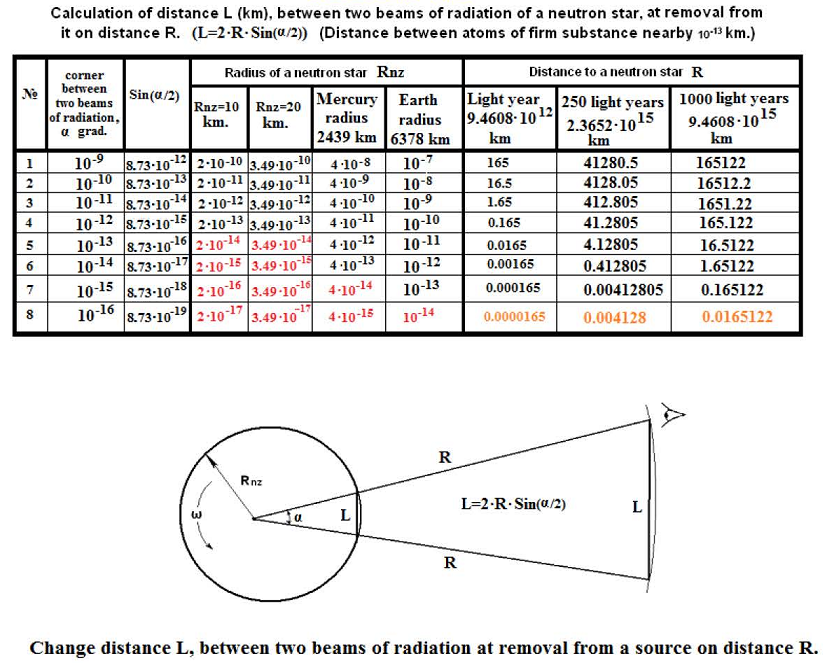If the chain reaction goes faster, or the suction of gas from the space does not lead to a resumption of synthesis, there is an explosion of the «white dwarf» as a result of the uncontrolled chain reaction of nuclear fission, transuranic elements.
The power of this explosion depends on the degree of «over critical» of the «white dwarf». Moreover, the power of the explosion of the «white dwarf» depends on the mass of heavy (transuranic) atoms are in it. The higher is the actual mass of transuranic elements values of the «critical mass», the stronger will be the explosion of the «white dwarf». In our case, when the mass of a star is average, and after the explosion remains a «neutron star», the yield is not enough to throw the entire mass and therefore it remains as a «neutron star».
What is the «neutron star»?
After the explosion of the «white dwarf», and the release of its mass, the remaining mass became «a critical», i.e., the mass of transuranic atoms decreased, and the speed of valuable fission reaction began to decline (decay). The number of available neutrons in each subsequent act decreases in a logarithmic sequence. The energy of these neutrons is very high, and their number is countless. This release of radiation after nuclear fission reactions enables us to capture these cosmic objects called «neutron stars».
— «Neutron stars» — «pulsars»
Modern astrophysics argues that the pulsar is a «neutron star» that rotating at high speed, they commit one rotation in a few seconds.
But there is another possible explanation of the pulsation of these objects.
After the explosion, the «white dwarf» is formed into a «neutron star». The mass of the «neutron star» is radioactive and has a high neutron and radioactive radiation, which is typical for heavy kernels, involved in nuclear fission reactions.
The emission of neutrons from the «neutron stars» can’t travel for long distances for two reasons:
1. The neutrons decay into protons and electrons 15 minutes after the radiation.
2. The particles are not able to overcome the vast distance, even in the rarefied outer space. We see it as an example of the solar wind.
In moment of fission and decay of kernels particle allocated: electromagnetic radiation,
X-ray and γ — rays which can travel great distances of space. These radiation fix our devices, they have a pulsating character.
Astrophysicists explain this fact a high speed «neutron star».
We want to examine another option, more objective in our opinion.
After the nuclear explosion of the «white dwarf», the remaining mass of the neutron star is not stable and radioactive. In space, this mass emits particles, X-ray and γ — radiation, part of which extends to the Earth. The radiation is scattered and emitted in all directions as shown in illustration№R-9.8.
(158) Illustration №R-9.8
The sources of these emissions are the point objects kernels of atoms.
From a short distance, a neutron star can be considered as a common source of radiation, but from a long distance, because of the dispersion (divergence) of beams, «neutron star» must be viewed as a collection point or segmental radiation sources.
Illustration № R-9.9 shows the divergence of the two beams of electromagnetic radiation, the table №Т-9.2 presents the results of calculations of the difference between these rays on the possible radius of the «neutron stars», and distances of one year, 250 and 1000 light years, the angles between the rays of 10-16 to 10-9 degrees. Distances are taken from the calculation that, the nearest «neutron star» to Earth is located at a distance of 250 — 1000 light years away.
The distance between the atoms in a solid body 10-13 km, it is the minimum distance that can lay between two rays on the surface of Neutron Star. On table № T-9.2 the distance between the rays of less than 10-13 km are marked in red, and further calculations for these cases are pointless.
In fact, at high temperature, the surface of the «white dwarf» and the «neutron star», maybe represents the molten liquid mass, in which the distance between the atoms of is more than 10-13 km. In the presence of atmospheric gases and plasma as in normal stars, the distance between the kernels of atoms and particles is much more. It should be noted that part of the radiation is distinguished in particles during the decay, and after the radiation in outer space, the distance between the rays increases.
(159) TABLE №T–9.2
Illustration №R-9.9



